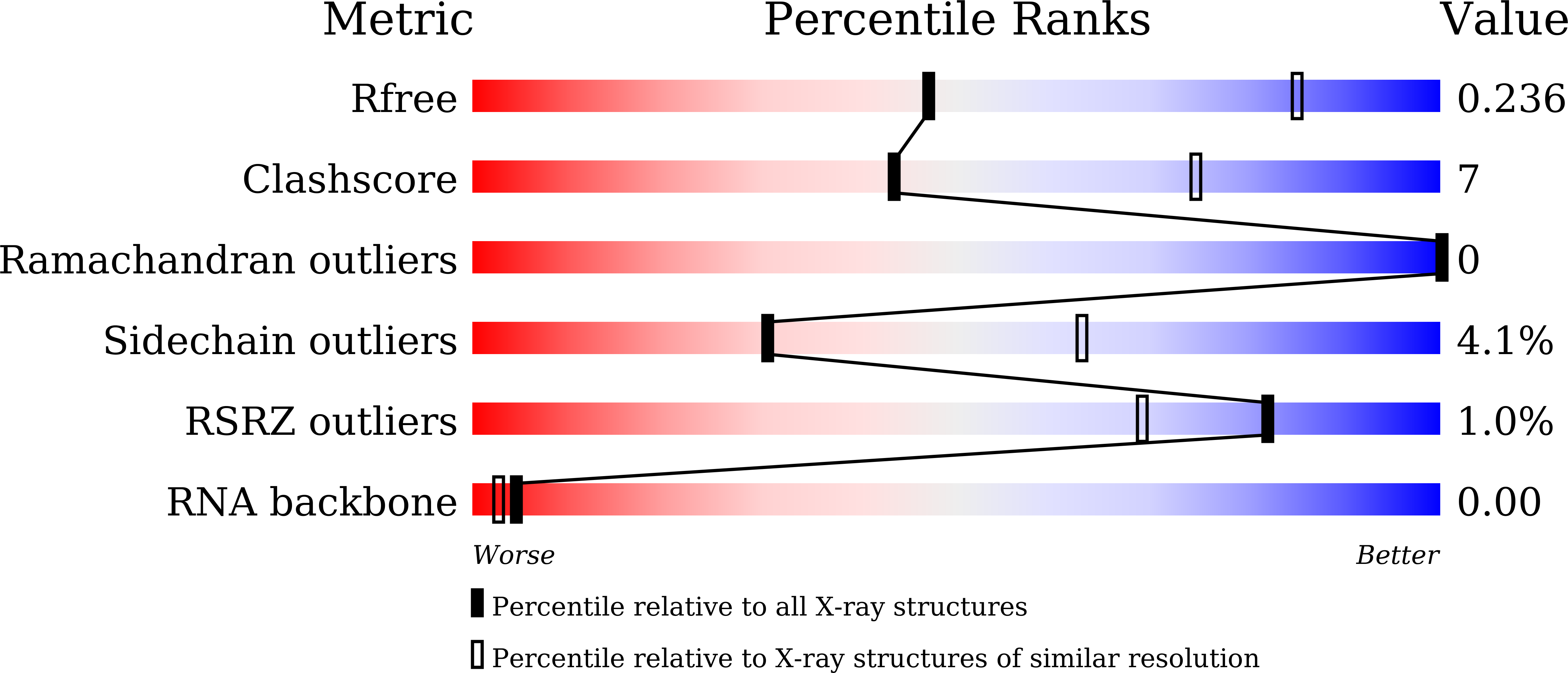RNA extension drives a stepwise displacement of an initiation-factor structural module in initial transcription.
Li, L., Molodtsov, V., Lin, W., Ebright, R.H., Zhang, Y.(2020) Proc Natl Acad Sci U S A 117: 5801-5809
- PubMed: 32127479
- DOI: https://doi.org/10.1073/pnas.1920747117
- Primary Citation of Related Structures:
6KON, 6KOO, 6KOP, 6KOQ, 6KQD, 6KQE, 6KQF, 6KQG, 6KQH, 6KQL, 6KQM, 6KQN, 6L74, 6LTS, 6TYE, 6TYF, 6TYG - PubMed Abstract:
All organisms-bacteria, archaea, and eukaryotes-have a transcription initiation factor that contains a structural module that binds within the RNA polymerase (RNAP) active-center cleft and interacts with template-strand single-stranded DNA (ssDNA) in the immediate vicinity of the RNAP active center. This transcription initiation-factor structural module preorganizes template-strand ssDNA to engage the RNAP active center, thereby facilitating binding of initiating nucleotides and enabling transcription initiation from initiating mononucleotides. However, this transcription initiation-factor structural module occupies the path of nascent RNA and thus presumably must be displaced before or during initial transcription. Here, we report four sets of crystal structures of bacterial initially transcribing complexes that demonstrate and define details of stepwise, RNA-extension-driven displacement of the "σ-finger" of the bacterial transcription initiation factor σ. The structures reveal that-for both the primary σ-factor and extracytoplasmic (ECF) σ-factors, and for both 5'-triphosphate RNA and 5'-hydroxy RNA-the "σ-finger" is displaced in stepwise fashion, progressively folding back upon itself, driven by collision with the RNA 5'-end, upon extension of nascent RNA from ∼5 nt to ∼10 nt.
Organizational Affiliation:
Key Laboratory of Synthetic Biology, Chinese Academy of Sciences Center for Excellence in Molecular Plant Sciences, Shanghai Institute of Plant Physiology and Ecology, Chinese Academy of Sciences, 200032 Shanghai, China.























